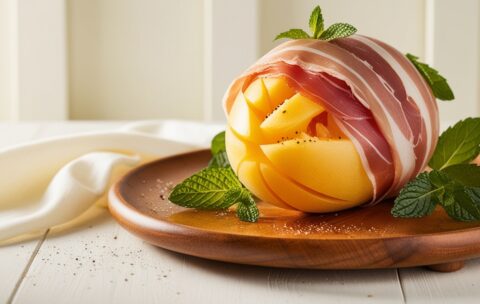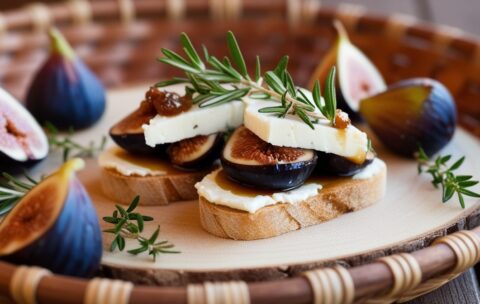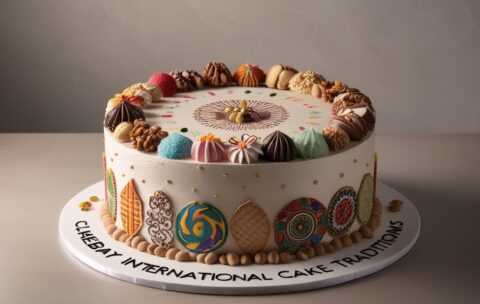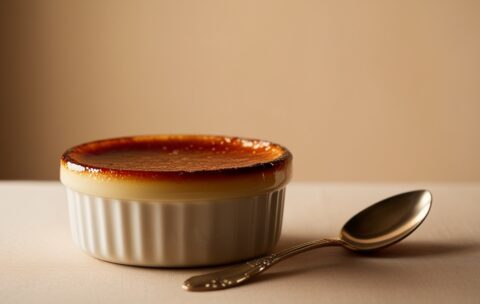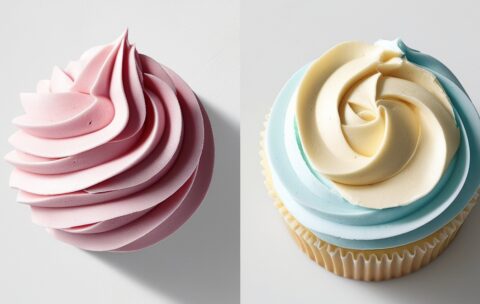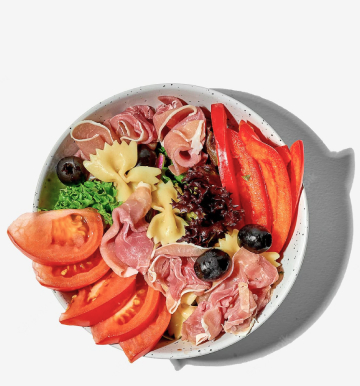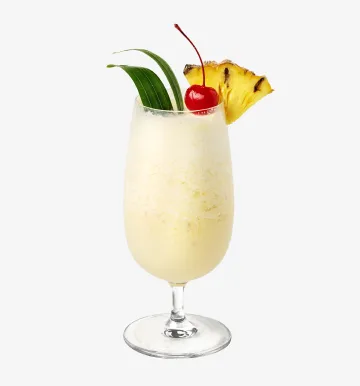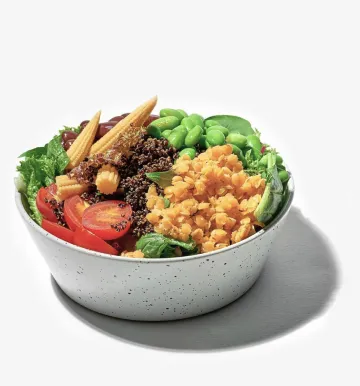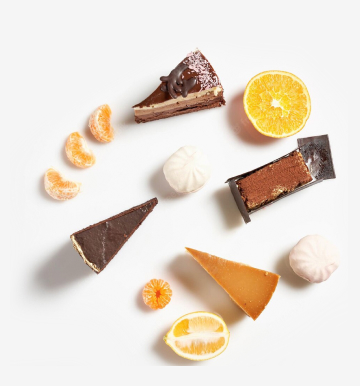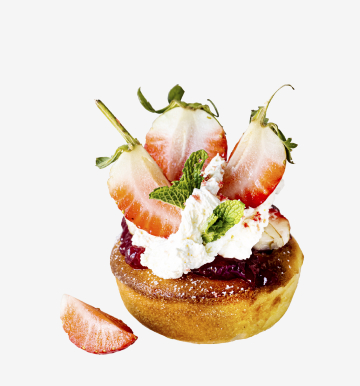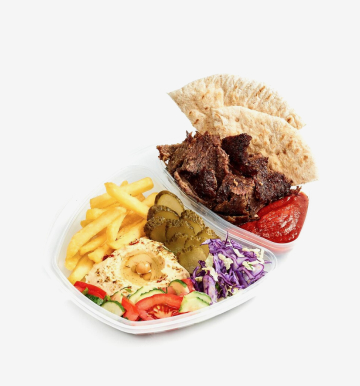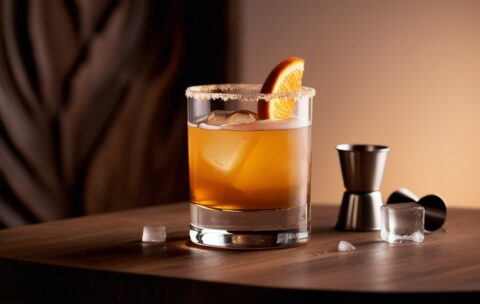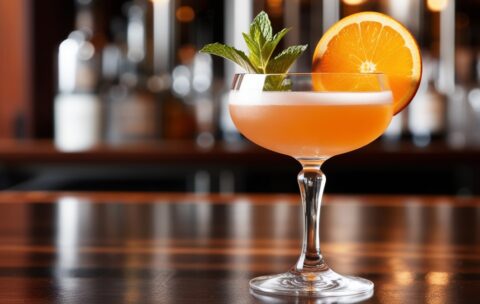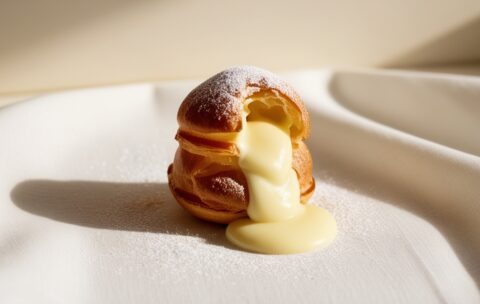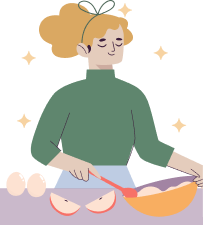Home Update 02
October 4, 2023 2025-06-05 13:04Home Update 02
Become a Home Chef
Learn to cook from scratch and master restaurant-quality meals in your own kitchen. Perfect for beginners and food lovers.

Our Top Courses
We've selected the best programs to get you started. Each course offers step-by-step lessons, hands-on recipes, and guaranteed results — even for beginners.
Spinach & Strawberry Salad
7 Lessons
3.8 hours
Intermediate
What you'll learn
How to select and prep baby spinach for optimal tenderness
Techniques for slicing and macerating strawberries to intensify sweetness
Crafting a balanced honey–balsamic vinaigrette from scratch
Layering ingredients for maximum textural contrast
Tips for plating and garnishing to elevate presentation
Strategies for make-ahead assembly without wilting
Prosciutto-Wrapped Melon
4 Lessons
2 hours
Intermediate
What you'll learn
How to select the best melon (e.g., cantaloupe or honeydew) for optimal sweetness and texture
How to choose high-quality prosciutto (understanding different curing methods and grades)
Proper slicing and portioning techniques for both melon and prosciutto
Tips for assembling prosciutto strips and melon wedges so they stay intact and look polished
Flavor-pairing insights (e.g., drizzling aged balsamic or adding a fresh herb garnish)
Mai Tai
4 Lessons
1.2 hour
Intermediate
What you'll learn
Historical Origins & Evolution: Explore how the Mai Tai was invented by Victor J. “Trader Vic” Bergeron (or, by some accounts, Donn Beach) and how it shaped Tiki culture.
Ingredient Selection: Learn why orgeat syrup is indispensable, how to choose complementary rums (aged vs. dark), and the role of fresh lime juice.
Proportions & Balance: Master classic ratios (two rums : one lime : one curaçao : half orgeat) to achieve a harmonious interplay of sweetness, acidity, and almond depth.
Mixing Techniques: Practice shaking with crushed ice to create the signature frosty texture and correct dilution.
Garnishing & Presentation: Discover professional garnishing methods—mint sprig, lime shell, optional passion‐fruit froth—to enhance aroma and visual impact.
Variation & Customization: Experiment with fruit infusions (pineapple, passion fruit), flavored syrups, or alternate rum blends for personalized twists.
Tasting & Evaluation: Hone your palate to detect balance points, ensuring the nutty almond note complements but does not overpower.
Grilled Salmon with Lemon Butter
4 Lessons
1.8 hour
Intermediate
What you'll learn
Outcome Description
Selecting Quality Salmon Identify sustainable salmon cuts (filets vs. steaks), check for freshness, and understand label terms (wild-caught vs. farmed).
Marinade & Seasoning Techniques Prepare a simple herb-citrus marinade that enhances flavor without overpowering the fish.
Grilling to Perfection Control grill temperature, manage flare-ups, and achieve crisp skin while maintaining a juicy interior.
Preparing Lemon Garlic Butter Combine melted butter, fresh lemon juice, garlic, and herbs to create a bright finishing sauce.
Doneness & Presentation Use visual cues and a thermometer to judge when salmon is cooked through (125–130°F / 52–54°C), and plate with complementary garnishes.
Goat Cheese and Fig Crostini
3 Lessons
1.2 hour
Intermediate
What you'll learn
How to properly slice and toast baguette rounds to achieve an even, crunchy base.
Techniques for preparing a simple fig compote, balancing sweetness and acidity.
Methods to blend goat cheese with complementary herbs or citrus zest for extra depth.
Tips for assembling crostini layers—goat cheese, fig compote, and finishing touches—for visual impact.
Flavor-pairing principles: matching creamy cheese with sweet fruit, crunchy bread, and a final drizzle.
Layer Cake Construction & Filling Strategies
3 Lessons
58 minutes
Intermediate
What you'll learn
Baking for Uniform Layers: How to prep pans (lining, spray), adjust batter distribution, and use baking strips or temperature hacks for flat, even cake tops.
Leveling & Stacking: Knife vs. cake leveler methods; applying a thin “crumb coat” of frosting; inserting dowels or straws for multi-tier support; stacking layers without slippage.
Filling Varieties & Textures: Selecting between custards, curds, fruit compotes, ganaches, buttercreams, and mousse fillings—considering sweetness, moisture control, and pairings (e.g., raspberry curd with chocolate cake).
Preventing Leaks & Weeping: Techniques for sealing cake layers (buttercream dam, chocolate collar), ensuring fillings stay contained; chilling strategies to set fillings before final coating.
Flavor Harmony & Balance: Matching cake flavor (vanilla, chocolate, spice) with filling profiles (tart, sweet, creamy) to avoid one element overpowering another; adjusting sweetness levels.
Finishing & Presentation Prep: Applying a smooth final coat of frosting or ganache; creating optional decorative borders or piped accents; slicing tips for clean, even servings.
International Cake Traditions
5 Lessons
2.9 hours
Intermediate
What you'll learn
How to prepare and bake at least five signature cakes from different countries, using authentic ingredients and methods
The cultural and historical significance of each cake: when and why it’s traditionally served
Variations on flavorings and decorations that make each region’s version unique
Techniques for achieving proper texture, moisture, and flavor balance in international recipes
Tips for adapting ingredients when certain items are not readily available in your area
Presentation ideas to honor traditional styles (for example, Panettone’s distinctive domed shape or a Japanese wagashi’s intricate design)
Beef Tacos
6 Lessons
2.5 hours
Intermediate
What you'll learn
Beef Selection & Preparation: How to choose between ground beef, skirt steak, or chuck roast; trimming and cutting techniques for even cooking.
Seasoning & Marinades: Crafting a balanced spice blend (chili powder, cumin, oregano) and optional citrus-based marinade for tender, flavorful beef.
Cooking Methods: Techniques for stovetop sautéing, grilling, and slow-simmering to achieve optimal texture and taste.
Tortilla Choices & Warming: Differences between corn and flour tortillas; methods to warm or lightly char tortillas on a skillet or griddle.
Salsa & Sauce Creation: Simple recipes for pico de gallo, salsa verde, and creamy sauces (e.g., crema or chipotle aioli), including ingredient ratios and seasoning adjustments.
Taco Assembly & Layering: Order of layering (meat, salsa, cheese, garnishes) to prevent sogginess; tips on portion sizing and presentation.
Garnish Variations: Ideas for fresh cilantro, diced onions, lime wedges, pickled jalapeños, and cotija cheese to enhance each bite.
Serving & Pairings: Suggestions for sides (rice, beans, elote) and beverage pairings (margaritas, aguas frescas) to complete the meal.
Crème Brûlée
5 Lessons
1.3 hour
Intermediate
What you'll learn
Custard Fundamentals (Paragraph):
You’ll discover how to create a smooth, silky custard by properly tempering egg yolks and controlling oven temperature during baking.
Flavor Infusion (List):
Selecting and preparing vanilla beans vs. extract
Balancing sugar and cream ratios for optimal richness
Incorporating subtle flavor variations (e.g., citrus zest, liqueur)
Caramelization Technique (Paragraph):
Master the process of evenly sprinkling sugar over the cooled custard and using a torch (or broiler) to achieve a perfectly caramelized, glass-like crust without burning.
Buttercream Icing Techniques
5 Lessons
59 minutes
Intermediate
What you'll learn
Buttercream Foundations: Basic ratios for American, Swiss, Italian, and French buttercreams; key differences in texture, sweetness, and stability.
Temperature Control: How to handle ingredients (room-temperature vs. chilled butter, sugar syrup stages) to prevent graininess or separation.
Flavoring & Infusing: Incorporating extracts, fruit purées, ganache, or cocoa; balancing sweetness and fat without compromising consistency.
Coloring Strategies: Best practices for gel vs. powdered colors; preventing “bleeding” or streaking when blending multiple hues (e.g., ombré or watercolor effects).
Spreading & Smoothing: Techniques for achieving glass-smooth sides (bench scraper, icing turntable, hot spatula method) and avoiding common marks or air pockets.
Piping & Decorative Textures: Creating rosettes, ruffles, ruffles, basketweave, petals, and multi-tone piping (hidden two-tone tips, reversible bags).
Stabilizing for Warm Climates: Adjusting recipes (adding meringue powder or corn syrup) so buttercream holds shape in humid or warm environments.
Troubleshooting Common Issues: Fixing grainy buttercream, curdled mixtures, overly soft or too-stiff icing; rescue methods (re-creaming, adjusting sugar syrup).
Choose Your Category
Our courses are grouped by category to help you find what suits your taste. From quick dinners to gourmet desserts — start with what inspires you.



About Our Culinary Journey
We are passionate about bringing the joy of cooking to everyone. Our mission is to empower food lovers with the skills and confidence to create delicious meals at home. With expert chefs, innovative teaching methods, and a love for culinary arts, we’re here to inspire your kitchen adventures.
Our Commitment
Everyone can cook well. Our courses offer clear guidance to ensure success for all skill levels.
Community Focus
Join our foodie community. Share creations and grow in a supportive environment.
Why Choose Our Culinary Courses?
Our courses are designed to make cooking fun, accessible, and inspiring. Whether you're a beginner or a seasoned cook, our unique features will help you elevate your skills and unleash your culinary creativity.

Expert Instructors
Learn from world-class chefs with years of experience. Our instructors guide you step-by-step, sharing professional tips.
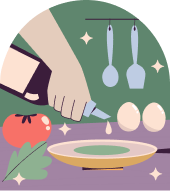
Flexible Learning
Study at your own pace, anytime, anywhere. Our online platform offers 24/7 access to lessons, so you can fit cooking into your busy schedule.

Hands-On Recipes
Practice with real recipes designed for all skill levels. From classic dishes to modern creations, you’ll master meals that impress every time.
What Our
Students Say
Hear from our happy students who have transformed their cooking skills with our courses. From beginners to seasoned cooks, our community loves sharing their success stories!
"This course completely changed how I cook! The instructors are so knowledgeable, and the lessons are easy to follow. I’m now confident making dishes I never thought I could."
Emma Johnson
"I love the flexibility of these courses. I can learn at my own pace and still feel supported. The recipes are amazing, and I’ve impressed my family with new dishes!"
Michael Chen
"The vegan cooking course was a game-changer for me. I learned so many creative ways to make plant-based meals that taste incredible. Highly recommend!"
Sophie Martinez
"The hands-on approach made learning so fun! I went from burning toast to baking artisan bread in weeks. Thank you for such an inspiring experience!"
James Carter
Discover Our Newest Culinary Courses
Get inspired by our latest additions! These exciting courses bring fresh ideas and techniques to your kitchen, perfect for food lovers eager to try something new. Browse our carousel to find your next culinary adventure.
Spinach & Strawberry Salad
7 Lessons
3.8 hours
Intermediate
What you'll learn
How to select and prep baby spinach for optimal tenderness
Techniques for slicing and macerating strawberries to intensify sweetness
Crafting a balanced honey–balsamic vinaigrette from scratch
Layering ingredients for maximum textural contrast
Tips for plating and garnishing to elevate presentation
Strategies for make-ahead assembly without wilting
Duck Breast with Caramelized Apples and Port Wine Sauce
2 Lessons
1.9 hour
Intermediate
What you'll learn
How to score and season duck breast for optimal rendered fat and crisp skin
Techniques for safely rendering duck fat in a cold pan and achieving uniform sear
Steps to caramelize apple wedges using butter, brown sugar, and a pinch of cinnamon
Methods for constructing a port wine reduction with shallots, herbs, and a splash of balsamic
Timing coordination to rest the duck and serve apples and sauce at the perfect temperature
Panna Cotta
5 Lessons
2.4 hours
Intermediate
What you'll learn
The fundamentals of making a perfectly smooth, classic Vanilla Panna Cotta with no grainy texture.
How to bloom and incorporate gelatin for optimal set and mouthfeel.
Techniques for infusing cream with aromatics (e.g., vanilla beans, citrus zest, coffee grounds) without overcooking.
Troubleshooting common issues (e.g., weeping, over‐firm Panna Cotta, air bubbles).
Recipe adaptations for dietary preferences (e.g., coconut-based Panna Cotta for a dairy-free alternative, agar-agar substitutions for vegetarian).
Creative topping and garnish ideas: fruit coulis, macerated berries, caramel shards, chocolate curls, and edible flowers.
Elegant plating and serving methods (serving in molds, serving “naked” in jars, layering with compotes).
Whiskey Sour
4 Lessons
1.2 hour
Intermediate
What you'll learn
History & Origins: Discover the origins of the Whiskey Sour, including its 19th-century naval roots and how it evolved into a mainstream favorite.
Ingredient Selection: Learn how to choose the right whiskey (bourbon, rye, or blended), select fresh lemons, and prepare simple syrup.
Techniques & Ratios: Master the proper juice-to-whiskey ratio (typically 2:1), the role of egg white (optional), and the importance of “dry shaking” versus “wet shaking.”
Shaking & Pouring: Develop your shaking technique to achieve a balanced, chilled cocktail with the signature frothy top.
Garnishing & Presentation: Practice professional garnishing methods—lemon wheel, maraschino cherry, and bitters drops—to elevate appearance and aroma.
Variation & Customization: Explore variations such as using different citrus (e.g., lime), flavored syrups, or spiced bitters to personalize the drink.
Tasting & Evaluation: Hone your palate to identify balance, acidity, sweetness, and mouthfeel, ensuring each Whiskey Sour is perfectly harmonious.
Niçoise Salad
3 Lessons
3.5 hours
Intermediate
What you'll learn
How to cook baby potatoes to a tender yet firm “bite”
Blanching haricot verts (thin green beans) for vibrant color and snap
Properly searing fresh tuna (or preparing high-quality canned tuna)
Crafting a classic Dijon-vinaigrette with shallots and garlic
Composing and plating a balanced, restaurant-style Niçoise
Fish & Chips
7 Lessons
2.3 hours
Intermediate
What you'll learn
How to choose and prepare the right white fish (e.g., cod, haddock) for firm, flaky results.
Techniques for making a light, airy beer batter that clings evenly and fries to a golden crisp.
Step-by-step instructions for cutting, soaking, and rinsing potatoes to achieve chip-worthy texture.
Best practices for oil temperature control (325–350 °F) to avoid greasy or undercooked coating.
Tips for drying and seasoning fish and chips immediately after frying to lock in crunch.
Suggestions for traditional condiments and plating: malt vinegar, tartar sauce, mushy peas, and lemon wedges.
Osetra Caviar Blinis
4 Lessons
1.4 hour
Intermediate
What you'll learn
How to mix, ferment, and cook a classic buckwheat-and-wheat blini batter for the lightest possible texture.
Techniques for keeping blinis uniformly round and perfectly golden—no uneven edges or undercooked centers.
Best practices for handling and storing Osetra caviar to preserve its delicate flavor and texture.
Methods of layering crème fraîche (or sour cream) and caviar for a visually striking presentation that amplifies taste.
Pairing suggestions: which garnishes (chives, dill, lemon zest) accentuate caviar without overpowering it.
The Winston
4 Lessons
1.4 hour
Intermediate
What you'll learn
Ingredient Harmony: How to select a high-quality single-malt or blended Scotch (or bourbon) and pair it with an appropriate dry vermouth.
Bitters Application: Which bitters complement whisky and vermouth, and how to dose them for optimal aroma without overpowering the base spirits.
Stirring vs. Shaking: Why “The Winston” is best built in a mixing glass, and how to stir to achieve crystal clarity and ideal dilution.
Garnishing Techniques: Crafting the perfect citrus twist and expressing its oils to accentuate the drink’s aromatics.
Glassware Selection: Choosing the right glass (coupe or old-fashioned) to showcase the cocktail’s color and maintain temperature.
Espresso Martini
7 Lessons
2.5 hours
Intermediate
What you'll learn
Historical Background: Trace the origins of the Espresso Martini and understand its cultural impact in the mid-1980s London bar scene.
Ingredient Selection: Identify the ideal vodka and coffee liqueur varieties, plus quality indicators for fresh espresso beans.
Espresso Extraction: Master key variables—pressure, temperature, and timing—to pull a shot optimized for a cocktail.
Mixology Techniques: Learn dry-shaking and ice-shaking methods to achieve a rich, stable crema and a perfectly chilled drink.
Straining & Presentation: Discover how to double-strain for a crystal-clear pour, layer foam properly, and place garnishes without collapsing the crema.
Serving & Pairing: Explore glassware choices, serving temperatures, and ideal food pairings for various occasions.
Profiteroles with Custard
3 Lessons
1.3 hour
Intermediate
What you'll learn
How to prepare and bake pâte à choux (choux pastry) to produce perfectly puffed profiterole shells.
The step-by-step process for cooking a smooth, lump-free vanilla custard (crème pâtissière).
Techniques for piping and stuffing profiterole shells without causing them to collapse.
How to make a simple yet luscious chocolate sauce (ganache-style) for drizzling or dipping.
Presentation tips for arranging profiteroles on a platter or creating a classic croquembouche-style tower.


